More than 80 speakers took the stage to discuss a wide range of topics in sustainable fisheries and aquaculture production and responsible seafood sourcing
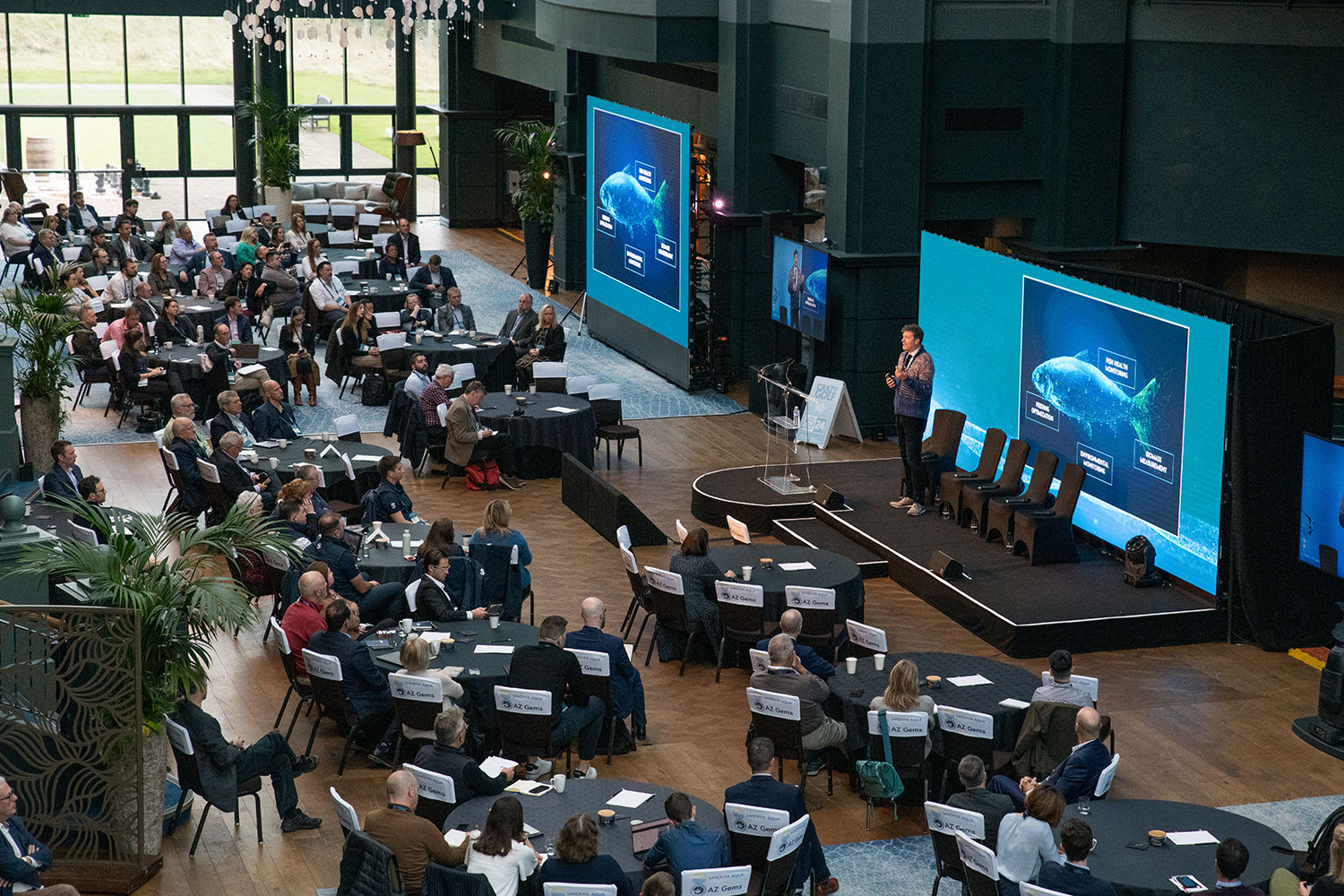
After a welcoming bagpipe ceremony and Scottish sea shanty performed by Joss Cameron, James Wright, managing editor and program director, shared some thoughts behind the theme, Increasing Seafood’s Share.
“We have a robust agenda for the next few days featuring more than 80 speakers tackling the salient issues of the day from fisheries and aquaculture,” said Wright.
With regards to the program theme, many speakers will address the rise of ‘blue foods’ as a sustainable food source, as well as highlight the challenges to achieving it.
“When the subject of global food security is raised, seafood often finds itself fighting for attention and support,” said Wright. “What can we do to change that part of the answer to continual improvement?”
“Seafood is so important to us here, and not just in terms of our diet – it’s an intrinsic part of Scottish culture and hugely important to our economy,” said Cabinet Secretary Mairi Gougeon in pre-recorded remarks. “We are honored to be hosting this conference. We know how important seafood is to Scotland, but at a global level as well.”
Mike Kocsis, CEO of the Global Seafood Alliance, opened with remarks emphasizing collaboration as the key to building a seafood sector that’s “bigger and better.”
“I encourage everyone here to paint your own mental picture of what a bigger seafood industry looks like,” Kocsis said. “Think of your organization and overall vision – with bigger market, more customers, more partners, more impact. But bigger and better requires us to think a little bit differently. It requires sustainable growth, inclusive growth, collaboration and so much work.”
Kocsis highlighted seafood as a potential solution and a “bridge to a low-impact future,” urging delegates to use the conference to share ideas and foster partnerships.
“It starts with you, the changes you’re willing to make and the challenges you are willing to accept,” Kocsis said. “You can’t do it alone – it takes collaboration. Have a growth mindset and focus on continuous improvement.”
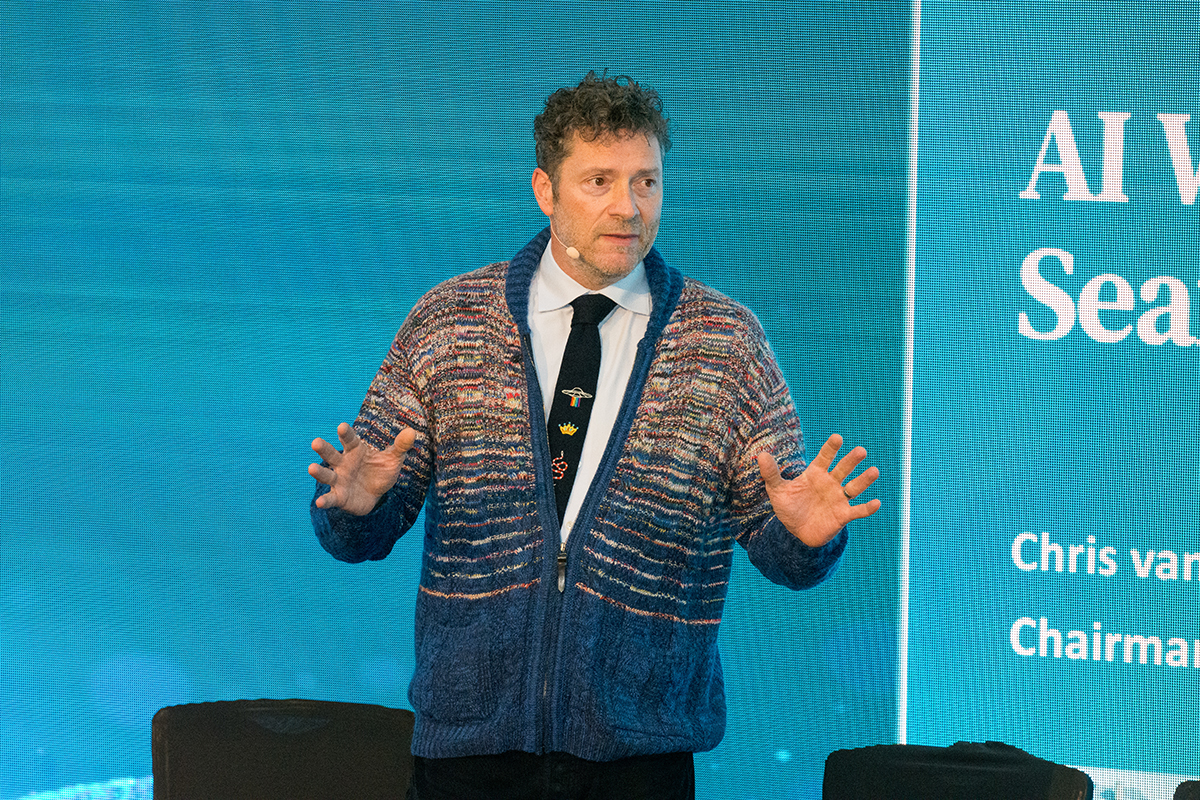
Keynote Address: AI Will Transform the Seafood Industry
Chris van der Kuyl, one of Scotland’s leading entrepreneurs in technology, media, gaming and entertainment, discussed how artificial intelligence (AI) and other emerging technologies will shape the future of the seafood sector.
“We live in a time of the fastest pace of change in human history,” said van der Kuyl. “It’s never going to be this slow again. The future promises faster innovation, reshaping industries and societies at unprecedented speeds. This can be exciting and utterly terrifying.”
Van der Kuyl noted that aquaculture currently provides 50 percent of the world’s seafood and is one of the fastest-growing food production sectors. However, challenges like fish welfare, operational efficiency, data management and sustainability could hinder its growth.
“This is where AI comes into play,” he explained, highlighting its potential uses in fish health monitoring, feed optimization and biomass measurement.
“AI can even predict future environmental changes, enabling proactive measures to protect fish stocks,” he said. “It thrives on data, transforming it into actionable insights that optimize every aspect of aquaculture operations, making them more efficient, profitable and sustainable.” He emphasized that AI could enhance sustainability through improved blockchain traceability and reduced environmental impact.
“AI-driven assistance can help aquaculture produce more fish with fewer resources, minimizing environmental impact,” said van der Kuyl. “Fisheries will pursue experiments with greater techniques informed by vast AI datasets, while farmers implement feeding programs optimized by predictive algorithms.”
The future promises faster innovation, reshaping industries and societies at unprecedented speeds. This can be exciting and utterly terrifying.
Panel: We can actually do that? Why seafood should embrace AI and other emerging technologies
A panel featuring keynote speaker Chris van der Kuyl, John Goodlad (Sustainable Oceans Fund) and Eric Enno Tamm (ThisFish) discussed the role of AI, emerging technologies and investment in the seafood sector, with a key takeaway being the importance of integrating data and AI to enhance sustainability.
“If you’re not sustainable, then you don’t have a long-term future,” said Goodlad. “AI is going to be huge. I think investors aren’t going to invest in AI because it’s ‘cool’ – they’re investing in AI to ensure greater profitability and greater sustainability. It will be transformational for both of these things.”
“The first thing we need to do is digitization 101,” said Enno Tamm. “The leaders of the companies are innovators, while others are laggards. You still need to get your company ready for the digital age. The fuel for AI is data – so if you don’t have data, you don’t have AI, and you will be years behind.”
Goodlad emphasized AI’s potential to improve efficiency and sustainability. “There are many mind-numbingly boring tasks. If AI can handle them, it’ll reduce labor costs and free up workers for other roles.”
The panelists agreed AI could enhance compliance, sustainability and profitability, though not all industry leaders may be ready for its immediate adoption.
“Get your data in order to prepare for what’s coming,” said Enno Tamm. “Many small and medium-sized businesses face capacity limitations.”
“It’s here, it’s coming and you can’t stop it,” van der Kuyl concluded. “If we harness AI’s power, the future will be incredible.”
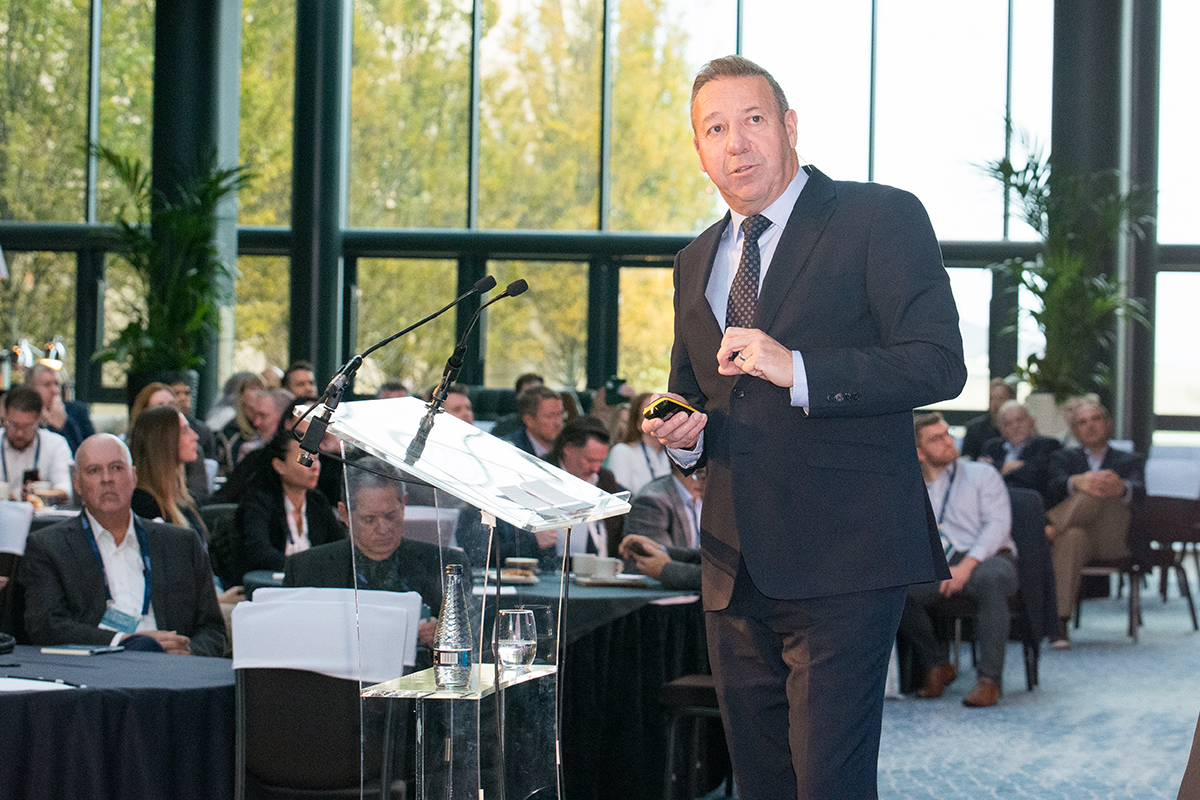
Choppy Waters: How the UK seafood industry is navigating post-Brexit trade
In the second plenary session, Marcus Coleman, CEO of Seafish, outlined how unfavorable trade scenarios have hampered UK and Scottish seafood exports, leading to a billion-pound loss in the industry. Coleman analyzed the causes and future outlook.
“The big question on my mind: Will there be a billion-pound bounceback for the UK seafood industry?” Coleman asked.
Initially, despite concerns about Brexit, things looked positive. However, the combined effects of COVID, Brexit, and disruptions in 2021 caused significant losses, especially in shellfish exports.
“Retail sales surged initially, but suppliers started to struggle,” Coleman said. “In 2021, we left the EU, and our shellfish exports were hit hard.”
Imports to the EU dropped about 30 percent, affected by various factors: the Russian invasion of Ukraine, rising living costs, reduced cod and haddock quotas, and maritime disruptions due to the Gaza war.
“The first half of 2024 shows some growth, with volume moving in the right direction,” he noted. Key species like cod, tuna, Alaska pollock and mackerel accounted for more than half the decline.
“There is better news coming,” Coleman added. “Seafood exports are growing again, with value and volume rising across all main species groups. Imports are still falling in value, but volume is stabilizing and we’re finding new markets.”
Coleman also pointed to an uptick in retail sales, signaling optimism for a slow recovery. Several species, including mackerel and monkfish, have bounced back, indicating progress.
“All we can do is focus on what we can control,” Coleman concluded. “There are lots of positives for the industry.”
Taking a walk on the wild side
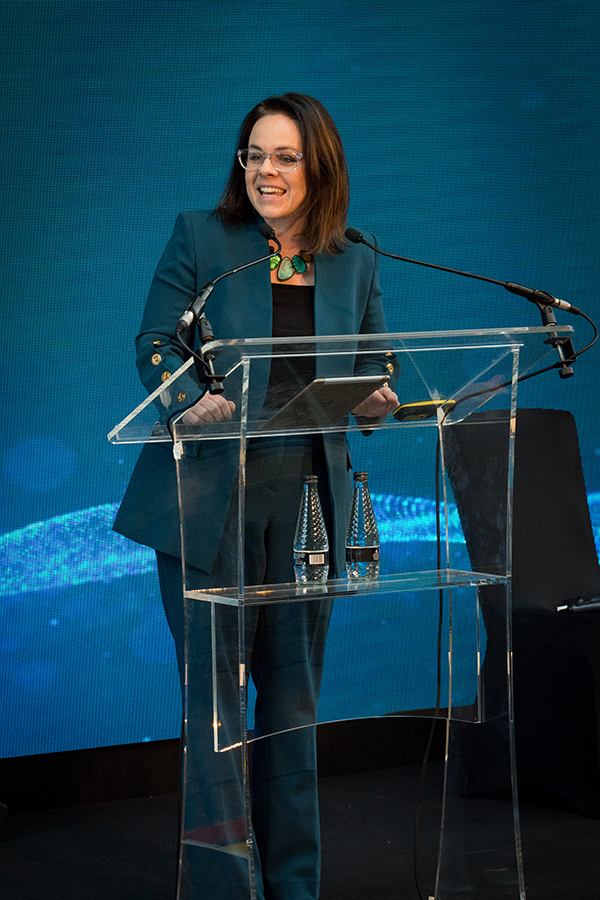
Janice Schreiber, managing editor of seafood data experts Expana Markets (formerly Urner Barry), provided insights into the supply and pricing dynamics for pollock, cod and salmon. Over the past 30 years, wild catch has continued to lag in growth compared to aquaculture.
“The most important thing to think about with wild catch is that it remains relatively flat,” Schreiber noted.
While wild salmon experienced a rise in 2023, it has seen significant declines in 2024. In her presentation, Schreiber outlined several factors currently impacting the industry, including Russian sanctions, fluctuations in demand, individual inventory positions, rising overseas replacement costs and potential quota reductions for 2025.
“We have seen the market start to bounce back recently,” she added.
Schreiber highlighted that Alaska wild salmon prices are 34 percent lower than in 2023, with sockeye salmon sizes “down dramatically in 2024.” The smaller sockeye sizes could affect frozen programs in the U.S.
“The bigger story is the Alaska sockeye size,” she explained, pointing to environmental changes, habitat degradation and a resulting decrease in fishing effort as contributing factors.
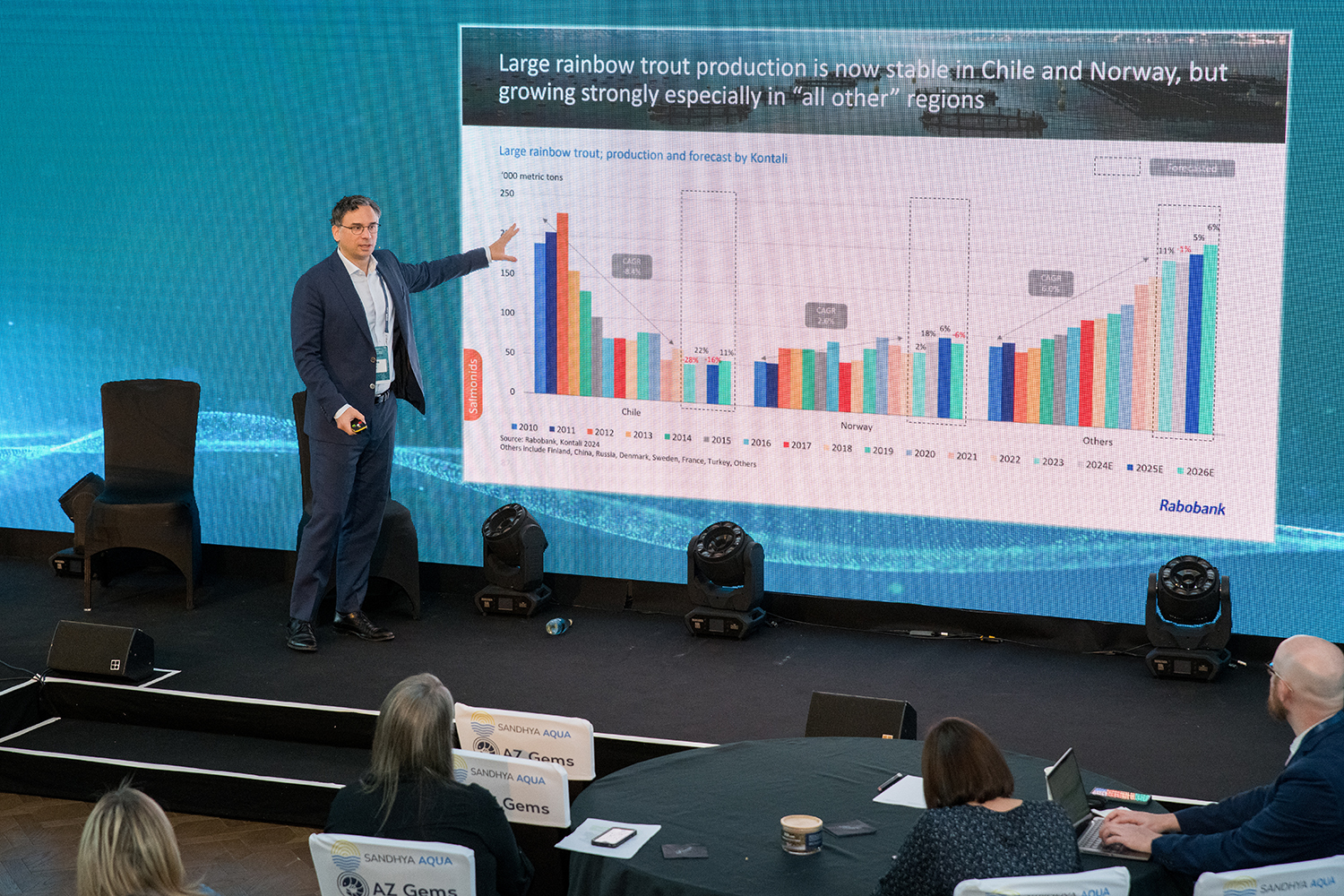
Annual GSA Global Finfish Production Survey & Forecast: A tough two years for salmon
Gorjan Nikolik, Senior Global Specialist for Seafood at Rabobank, presented the findings of GSA’s annual aquaculture production forecast. The key takeaway from the report is that, after two challenging years, Norway is now tentatively in growth mode for Atlantic salmon production.
“Some of the diseases have been solved enough that we have forecasted growth of 3 percent in Norway for next year, according to the survey results,” said Nikolik. “For global, it’s 1.7 percent.”
While Chile’s recovery is slow and is not expected to surpass 2020 supply levels even by 2026, Scotland has rebounded significantly, with Nikolik noting that it was one of the best years for Scottish Atlantic salmon production.
“Putting it all together, salmon has had two tough years, and now we’re coming back,” he said. “Low single-digit numbers, but back to growth, and that’s good news.”
Coho salmon production remains concentrated in Chile, with a significant drop anticipated in 2024, followed by a stable supply thereafter.
Turkey is experiencing a slowdown in sea bass and sea bream supply growth, while Greek production is expected to begin recovering. There is notable growth among second-tier producers, including Spain, Italy and especially Croatia. Sea bass and sea bream production are projected to see two years of growth in 2024 and 2025, partly driven by Turkey.
“It’s still a growth business,” said Nikolik.
China and Indonesia are the leading producers of tilapia. In China, tilapia is a mature sector with 2-3 percent growth, while Indonesia continues to experience rapid expansion.
“Indonesia is impressive, with 5.4 percent growth for 2024 and projected 3.6 percent for 2025,” said Nikolik.
Focusing on African tilapia producers, “all other” categories (Zambia, Ghana and Kenya) stand out as booming regions.
“That part of the world is perfect for tilapia,” Nikolik noted.
Latin America is also experiencing vibrant tilapia farming, driven by Brazil, which is beginning to export to the United States. “I think we will hear a lot more about Brazil and tilapia in the decades to come,” he added.
After a pause during the COVID years, tilapia supply is experiencing impressive growth again. “This is the chicken of the sea,” Nikolik remarked.
Asian catfish production is a significant industry, but it presents challenges for analysis due to discrepancies in naming. In China, Nikolik observed that carp production is no longer a growth sector and is likely to contract soon.
“Carp supply growth rate is declining to nearly zero,” he said.
However, marine finfish farming in China shows great potential as consumers increasingly seek premium species.
Overall, the outlook for 2025 is positive: “Pangasius has very good expectations, with a projected 6.1 percent growth in supply for 2025,” Nikolik stated. “Salmon is also returning to growth, partly driven by Scotland. So, next year, almost every single sector will perform better in 2025 than what we’ve seen so far in 2024.”
Common themes in global salmon production
Ragnar Nystoyl, Head of Analysis at Kontali, gave a comprehensive look at farmed salmon harvest estimates and discussed key demand drivers and marketplace dynamics.
“When it comes to the wild salmon in 2024, we have estimates on the global value from export. We haven’t seen a lower value of salmon in two decades. When it’s scarcity, it’s niche markets. But I think there are a number of explanations behind it. It’s a global reality, and there are common themes.”
Nystoyl said the license to produce “should not be taken for granted.” A bunch of factors are playing into the license to produce ore even harder, such as rising costs, political factors and limited sites. And sea lice is the “same global challenge” for salmon.
What’s on the horizon for the farmed salmon business in Scotland?
Kimberley McKinnell, Head of Health at Bakkafrost Scotland, gave a snapshot of Scotland’s salmon sector. A challenge for the sector she highlighted was making food production attractive to future generations, which means attracting talent, enhancing diversity in the workplace, and housing and accommodations.
“In some of these rural areas where we farm, there are very few options for housing,” said McKinnell. “This is something that we need government and industry to figure out. We need to get a handle on some of these things to get new talent.”
Scotland’s salmon sector has some innovative solutions with networking experiences, such as the Young Aquaculture Society and Women in Scottish Aquaculture, as well as training and career development opportunities.
Social license amid a sea of misinformation: A ‘fireside chat’ with Gilpin Bradley
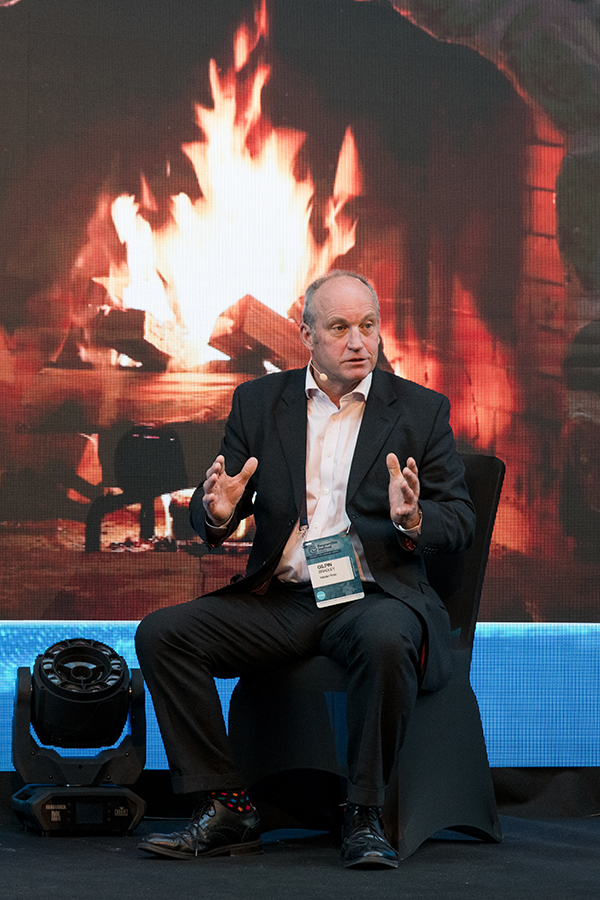
Salmon producers are facing waves of negative media attention In a “fireside chat,” Tavish Scott from Salmon Scotland discussed with Gilpin Bradley, a respected leader in the Scottish salmon farming industry, about what Scotland can learn from its neighbors.
“It can be a real challenge for farmers to see the forest for the trees,” said Bradley. “Choosing the right strain and being focused on the market is incredibly important.”
For fish farmers, Bradley emphasized that choosing the right team is essential, as is transparency and fostering shared goals with staff. Bradley commented that the misinformation and activism have gone “full circle,” and the key is to educate consumers and get the message through the supply chain.
“The industry has been slow to embrace educating the consumer,” said Bradley. “We probably spend too much time focusing on production. But educating the consumer can deal with some of that activism and misinformation.”
“I’m a huge optimist for anything grown in the sea, but we need to get the education bit,” said Bradley. “There are an awful lot of dreadful practices with other proteins. There are clever ways that we can grow successfully. It can be done. Farmed fish is an efficient way to feed the world.”
A spotlight on FIPs
For the first panel moderated by Tom Pickerell (World Resources Institute), experts discussed how seafood supply chains can more proactively support improving fisheries. After briefly outlining what are FIPs, panelists discussed how they can be used and effective ways of measuring success.
“One size does not fit all in the FIP space, but having some consistency in reporting and monitoring,” said Nicola Clark, Marin Trust, who also gave delegates a snapshot of some FIPs and their work.
Looking at marine ingredients, Benjamin Weis from Cargill said certification is key to assuring traceability and social justice.
“But let’s not forget that to become certified, it takes five years,” said Weis. “We need more FIPs, but they must turn into certified fisheries.”
“If FIPs are going to be successful, a buyer’s role has to go beyond just sourcing from FIPs,” said Rude. “FIPs cannot achieve the end goal without buyer engagement.”
Looking at the market, Steve Hart, Global Seafood Alliance, said that GSA had signed an MOU with FishChoice.
“The most challenging aspect is the human rights component,” said Hart. “We do have an enhanced social module that will be coming with our processing processor standard.”
In terms of policy-making, government and stakeholder engagement was highlighted as critical for success: “I wouldn’t underestimate the importance of government engagement right at the start,” said Clark. “That would be my takeaway. We see the most successful FIPS, at least long term, being the ones where the government is at the table and being part of that decision-making process.”
In the second panel, experts tackle the question of how fisheries engaged in FIPs can fit into seafood procurement policies long-term. Indrani Lutchman, Sustainable Fisheries Partnership, emphasized that we need to stop thinking about FIPs as “a short-term project, which may be three to five years long.”
“FIPs are a pathway to sustainability,” said Lutchman. “Originally, it was hoped the FIPs could address some of the challenges of fisheries.”
She highlighted that FIPs can fit with corporate commitments, with organizations that assess FIPs.
“Tesco works quite closely with FIPs to collect data,” said Lutchman.
The panelists discussed some challenges to implementing FIPs. One of the practical challenges is political, such as regulation and legislation issues, and a lack of engagement.
“There are a lot of different solutions and one of them is FIPs,” said Lisa Goche, an independent contractor speaking on behalf of GSSI. “We have to utilize every tool in the toolbox to advance sustainability,” said Lisa Goche, an independent contractor speaking on behalf of GSSI. “There are a lot of different solutions and one of them is FIPs. It’s really important that we amplify FIPs and get them back into the discussion.”
In terms of how technology can improve the transparency of FIPs, Jayson Berryhill from Wholechain said data will be key.
“If you think about it, physical infrastructure is very static and hard to update. It’s costly, said Berryhill. “Digital infrastructure is quite the opposite. It’s much simpler to deploy, simpler to update.”
In wrapping up the plenary, Kate Forbes, Deputy First Minister and Cabinet Secretary for Economy and Gaelic, gave a welcome address before the lunch break: “From a government perspective, we are incredibly proud of the work that the industry has done and is doing to put seafood on the agenda.”
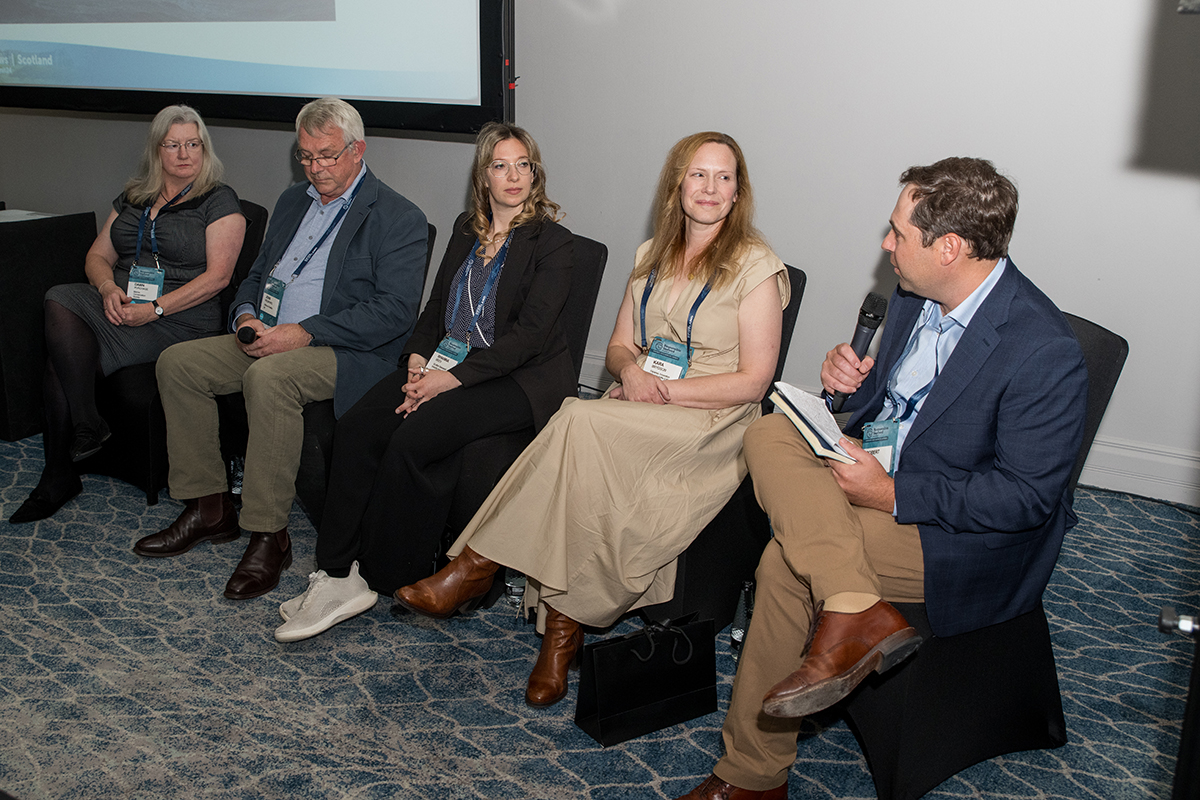
‘We can do this’: Climate action on the ground in fisheries and aquaculture
During the “Adaptation: Climate Action on the Ground in Fisheries and Aquaculture” panel, Robert Jones, Director of Global Aquatic Food Systems at The Nature Conservancy, led a discussion on how seafood harvesters and farmers are adjusting their operations to mitigate the impacts of climate change. Industry leader Kara Brydson from Fisheries Innovation & Sustainability shared practical strategies to protect marine environments and secure the future of seafood production.
“Climate change doesn’t happen in isolation,” said Dawn Purchase of the Marine Conservation Society UK. “There are multiple stressors of climate change, and they have cumulative impacts and they can exacerbate each other. However, there are lots of ways where the industry can adapt to climatic change.”
Purchase discussed genetic selectivity and local site selection as practical strategies, but also that one of the most promising ways that the industry can adapt going forward is by the use of technology and data utilization. But certification was also highlighted as a significant strategy.
“Certification programs have a role in promoting climate change adaptations within their standards, part of their criteria,” said Purchase. “For instance, GSA has a standard looking at climate and climate change adaptations.”
John Holmyard, owner of Offshore Shellfish Ltd, shared some of the practical strategies on his mussel farms, such as efficient vessel design that allows them to exist offshore and projects to regenerate the seabed. The company also prioritizes the quality to minimize food waste.
“When you’ve got good quality stuff, it’ll always get used. It won’t get thrown away,” said Holmyard.
Rhianna Rees from the Scottish Seaweed Industry discussed opportunities with the seaweed industry to mitigate climate change.
“Seaweed is effective at cleaning up marine systems,” said Rees. “You’ve got more filter feeders that take out any organic matter, and seaweed takes out inorganic matter, absorbs nitrogen, phosphorus, and everything else. It absorbs carbon while it’s in the marine system.”
Brydson explored net zero vessel concept designs and their potential for the seafood industry. One key challenge discussed was the need for support across the entire supply chain to transition towards net zero emission vessels.
“Had I turned up at Brixton harbor or Peterhead and said, ‘You know what, boys, you’re going to have to build a vessel in 20 years that runs on ammonia or methanol or hydrogen,’ I would have been run out of town,” Brydson explained. The shift away from diesel is complex, but efforts are being made.
“We’ve got support from the Scottish Government to help us look into the practicalities of transitioning to vessels that don’t rely on diesel,” she noted.
Brydson also emphasized the importance of supporting early adopters who are willing to take risks in trialing new technologies and fuels: “Early adopters need support. We need cross-sector collaboration to ensure those who take the punt can stay safe and keep their businesses running as we trial new fuels and design training courses.”
Demonstrating that these vessels can work is key, said Brydson, and fishers must be included in these conversations: “The solutions need to work for fishers and fit the specific needs of our regions and countries,” she added.
“My big take-home message is we can do this, but we need a lot of help,” she said. “There needs to be support along the supply chain.”
Building social accountability in seafood
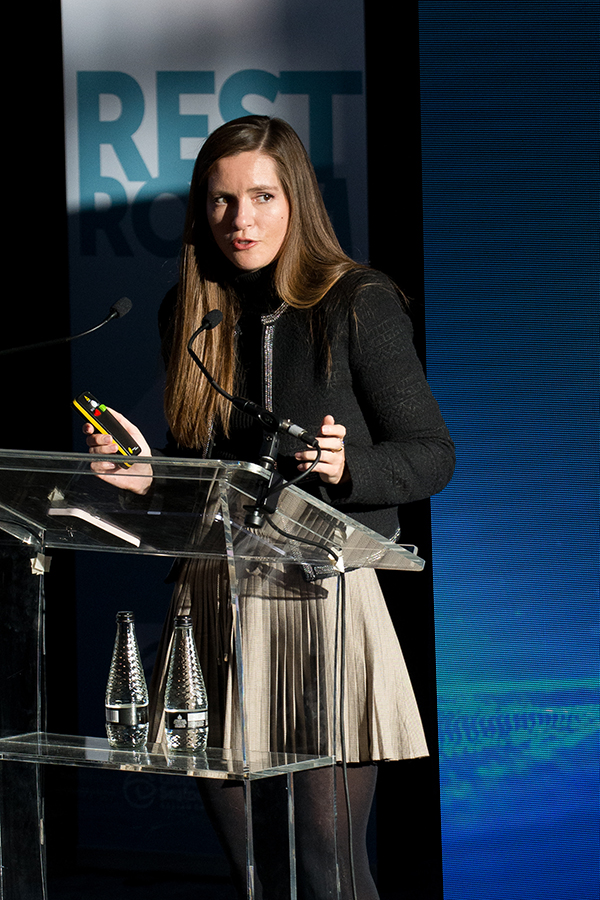
Seafood workers are essential to the global supply chain, yet many face challenges related to fair treatment and living wages. In a one-hour discussion moderated by Amy McGann of the Global Seafood Alliance, panelists explored human rights due diligence efforts in the seafood industry and outlined the latest requirements for social accountability audits.
“There are 128,000 fishers in forced labor worldwide – and this is a conservative estimate,” said Alison Potter, Technical Officer at the International Labour Organization. “The ILO report also found that more than 100,000 fishing-related deaths occur each year, and many are preventable.”
Potter highlighted some red flags of forced labor – deception, isolation, debt bondage, abusive living/working conditions, among others – and what could be done to create “the opposite,” such as minimum working hours and freedom of movement.
“WiFi on board vessels would be the perfect antidote to isolation,” said Potter.
“Fishing by its very nature is a very dangerous, accident-prone occupation,” added Chris Williams from the International Transport Workers Federation. “Trade unions are a very special mechanism for human rights due diligence.”
Williams talked about collective bargaining agreements as fundamental to protecting fisher health and safety, as well as ensuring that “a fair share” goes to the workers. Traceability was also highlighted as essential to improving labor conditions and ensuring that work is conducted safely.
Marks and Spencer presented their standards and policies that “go beyond certification,” sharing examples such as their Forever Fish requirements on environment, people and ethics, fish welfare, climate change, and legal. Also highlighted were how M&S suppliers must provide vessel registers for all fisheries sourced to the development of the SWFPA Crew Welfare App.
“We helped develop a crew welfare app,” said an M&S representative. “We’re proud of that collaboration and we’re pushing quite hard to make sure it’s accessible to all UK crew.”
Other speakers included Georgia Worrall from the Seafood Ethics Action Alliance, who talked about how sharing solutions can amplify success, such as pooling resources for collective research or regular knowledge-sharing forums; and Emilie Carroll from LRQA discussed how social responsibility tools, like the EIQ Analytic Platform and the Roadmap to Improve Seafood Ethics, can augment organizations.
“The Social Responsibility Assessment Tool (SRA) is not a pass/fail – it’s an open-access tool that allows you to assess risk on a sliding scale,” said Carroll. “You can take all your social audits and put them into the framework and create an action plan to mitigate risks.”
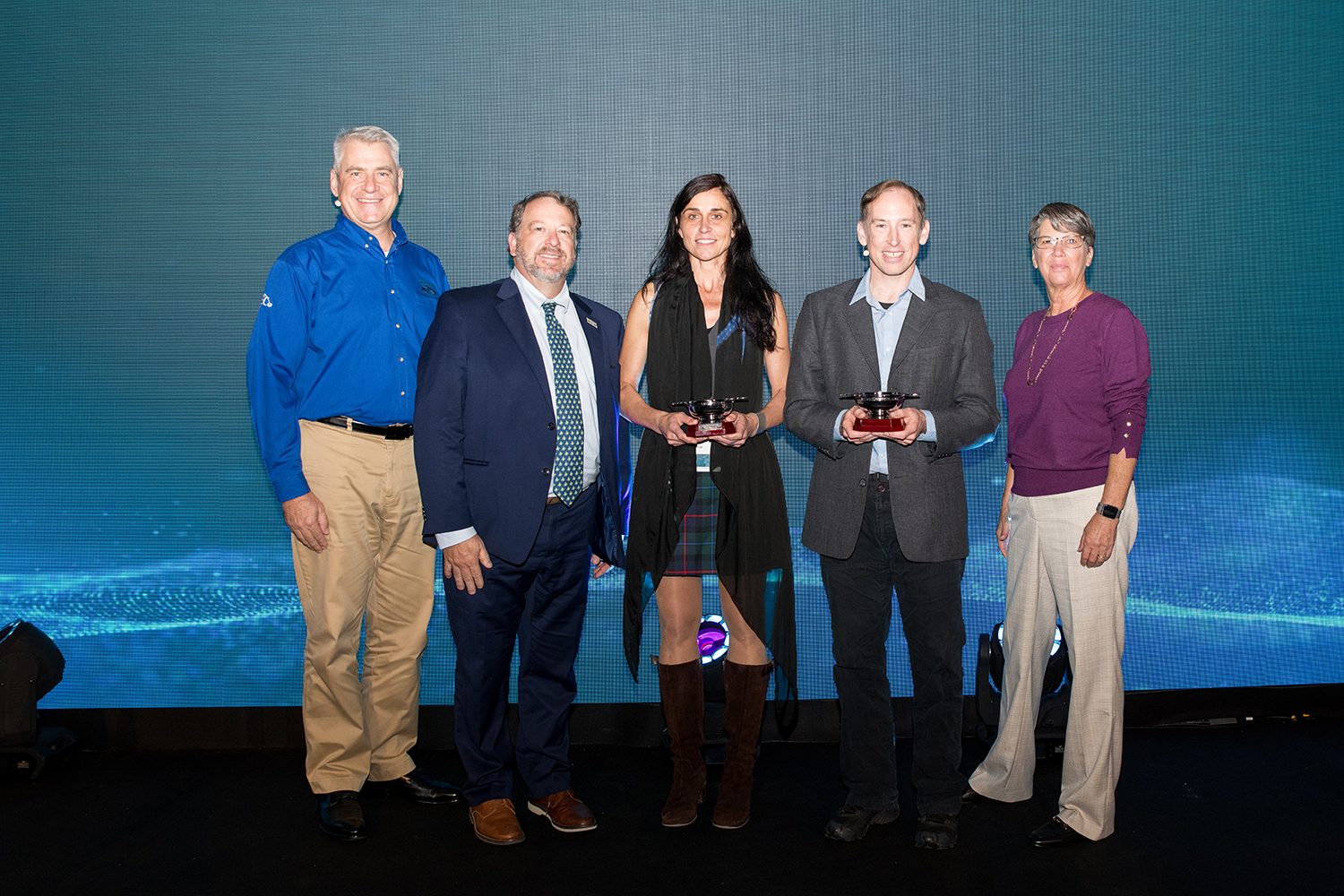
GenusWave and TinyFish win at the Responsible Seafood Innovation Awards
Sponsored by the U.S. Soybean Export Council (USSEC), the Responsible Seafood Innovation Awards kicked off with presentations from USSEC and last year’s aquaculture award winner, Aquit, a Chile-based biotech startup that has created a new tool for the salmon industry to control infections that harm fish and lower yield.
GenusWave received the Global Seafood Alliance’s Responsible Seafood Innovation Awards in the Fisheries category. The startle technology uses short bursts of sound to keep marine mammals away from fishing operations, cutting bycatch and noise pollution.
The initial goal of the research behind GenusWave was to tackle seal-related issues in fisheries and aquaculture. Traditional acoustic methods, which use loud noises, disturb dolphins and porpoises but also contribute to marine noise pollution. Over time, these methods have become less effective as seals have habituated to the sounds and have started to ignore them. But that doesn’t happen with sounds that trigger the startle reflex.
“If the door behind you suddenly slams shut because the wind caught it, you have that sudden flinch,” Vincent Janik, one of the researchers who developed the technology, told the Advocate. “That’s something that’s a reflex that’s based in the brain stem.”
Read more here:
TinyFish won the Global Seafood Alliance’s Responsible Seafood Innovation Awards in the aquaculture category. It aims to find unique markets for small salmon from Scottish hatcheries that are removed during the freshwater phase of production to allow the best salmon to be raised at sea.
Jarl van den Berg, a co-founder of Tiny Fish, told the Advocate that the initiative began four years ago during a brainstorming session with aquaculture technology specialist Ace Aquatec to find a solution to humanely harvesting juvenile salmon.
“Ace Aquatec had built the technology, but unfortunately, it lay dormant because there was no supply chain set up around it,” he said. “Meanwhile, we hatchery managers became increasingly frustrated at seeing our fish go to non-value-added products. But just because these fish are too small to be successfully transferred to sea, it doesn’t mean that they cannot be used in other ways.”
Day 2: Spotlight on welfare
Tim Hill, CEO of Stella Maris, kicked off the morning with a presentation about how the world’s largest ship-visiting network is improving the lives of seafarers and fishers through our network. Some of the issues highlighted were insufficient food supplies, lack of potable water on board, poor accommodation, lack of medical and dental treatment, salary disputes and isolation (e.g. lack of WiFi).
“There are some really good practices and really atrocious practices,” said Hill. “So it’s all about bringing up the standard for seafarers.”
The organization is engaged in various efforts to improve the conditions for seafarers, such as access to medical and dental, food and provisions, social and cultural events and clothing, among other things.
“Happy crew is a safe, efficient and productive crew,” said Hill.
Mike Park, CEO of the Scottish White Fish Producers Association, talked about how Scotland is addressing fishing crew welfare. One of the key initiatives is “trying to recruit that next generation into the sector,” which includes recruiting international workers through legitimate and fair means.
“We go through the conditions of employment line by line, so the employer responsibility is set out and explained,” said Park. “We take time to get it translated so that they can see it before signing up. It’s important that the worker feels supported and free from reprisal.”
In the next panel on animal welfare, Dr. Sara Barrento from FAI discussed training programs aimed at improving fish welfare, as well as shared an example of FAI’s scoring card for shrimp welfare. She highlighted key indicators – or “clues” – such as proper nutrition, health and environmental conditions.
“Good animal welfare starts with people,” said Barrento. “By the end of the workshop, we wanted participants to be able to recognize what good welfare looks like for shrimp.”
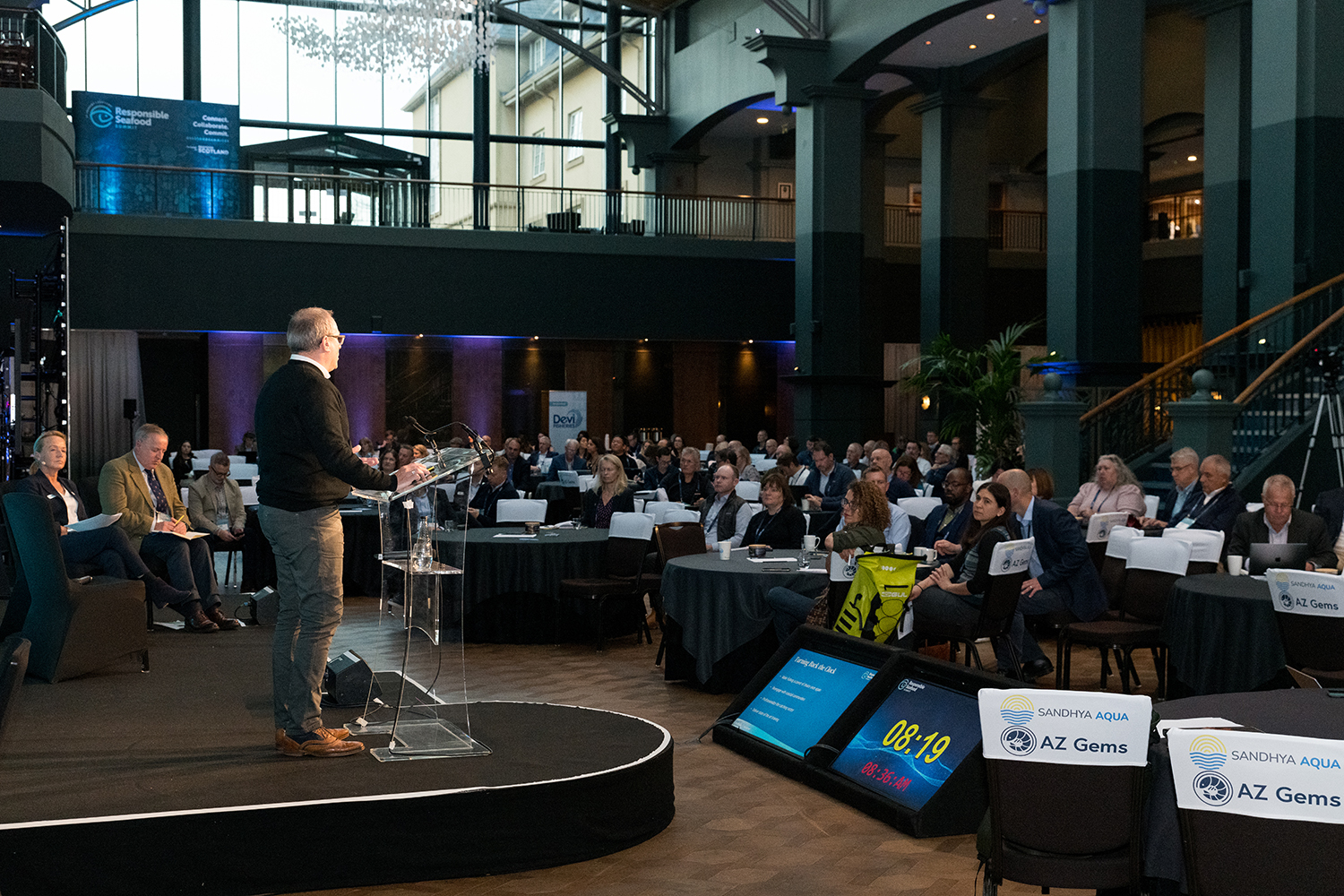
Simao Zacarias of the University of Stirling presented alternatives to shrimp eyestalk ablation, such as broodstock feeding and nutrition, sex ratio manipulation, selective breeding, and other hatchery practices.
“We cannot ignore hatchery practices, like training staff,” said Zacarias.
There are mixed perceptions on the economics involving non-ablation practices, but Zacarias said that farmers can also adapt their protocols to “optimize any potential additional costs of sourcing postlarvae produced on non-ablated based systems, which is not significant.”
“As final thoughts, it’s important for hatcheries to improve their practices, and this can be site-specific,” said Zacarias. “Your genetic will determine the performance of other practices on the success of non-ablation. Switching to non-ablation should be done in different phases, and black tiger shrimp may take longer to phase out from eyestalk ablation.”
Ben Perry, Head of Sales at Ace Aquatec, talked about how improved animal welfare has correlated with better human welfare.
“The slaughter and processing industry has one of the highest staff turnovers of any sector,” said Perry. “Physical injuries and psychological health challenges are shown to be highly prevalent in the sector from prolonged exposure.”
Perry explained that in-water stunning technology can minimize the distress of the fish, as well as build staff awareness of fish that are exhibiting different behaviors and strive to resolve that.
A subsequent panel discussed the importance of welfare and why retailers need everyone’s help. The experts agreed that “it’s just better business if you look after animals.”
Staff training and retention were also highlighted as essential: “Take good care of the staff, and they will take good care of the animals,” said Barrento.
“If we want to retain the current workforce, which is aging, then we need to get more employees into the sector,” agreed Hill. “We want to be advocates, and we want them to remain sensitive to deviations from positive practices. And from a physical perspective, to be able to work into retirement.”
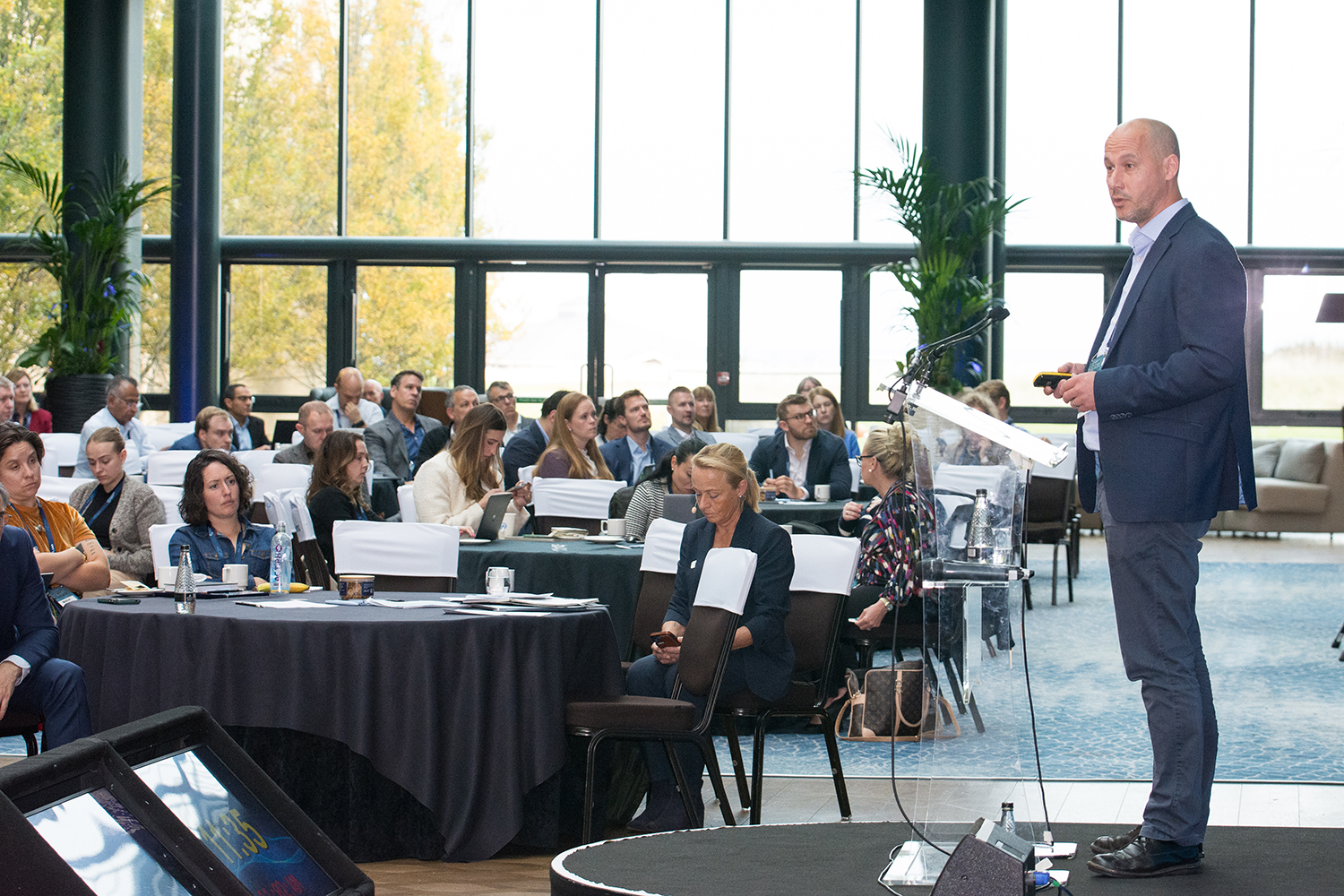
Survey spotlight switches to shrimp
Gorjan Nikolik, Senior Global Specialist-Seafood from Rabobank, presented the findings of GSA’s annual shrimp aquaculture production forecast. A key finding is that Ecuador’s shrimp industry, the world’s fastest-growing major aquaculture industry, is changing into lower gear.
“They’re the largest aquaculture industry in the Americas,” said Nikolik. “It may be 3 percent [growth] for 2025 for production. It depends a lot on China.”
Mexico has a “flattish, but respectable recovery” with a positive expectation (4 percent) for 2025. Brazil’s shrimp industry continues to grow, with 10 percent growth this year and an expected 10 percent growth in 2025. Other countries are a “mixed bag.”
“Venezuela is the best of the rest, and they’re also slowing down, but still incredible growth,” said Nikolik.
Smaller supplier regions in the Americas are feeling the pressure of low prices: “It’s a challenging period.”
Putting it all together, this year was clearly impacted by the lower shrimp price levels, with 2025 trending to be a slight improvement.
“Ecuador dominates South America,” said Nikolik. “There’s still a lot of production capacity in this part of this world. I expect it to be a temporary slow-down.”
Indian white shrimp production is impacted by low prices few farmers are choosing to switch to black tigers. Nikolik presented a few options for the Chinese shrimp supply.
“They’re slowing down, but still relatively positive,” said Nikolik. “Production is doing well, but not at a level at their official statistics.”
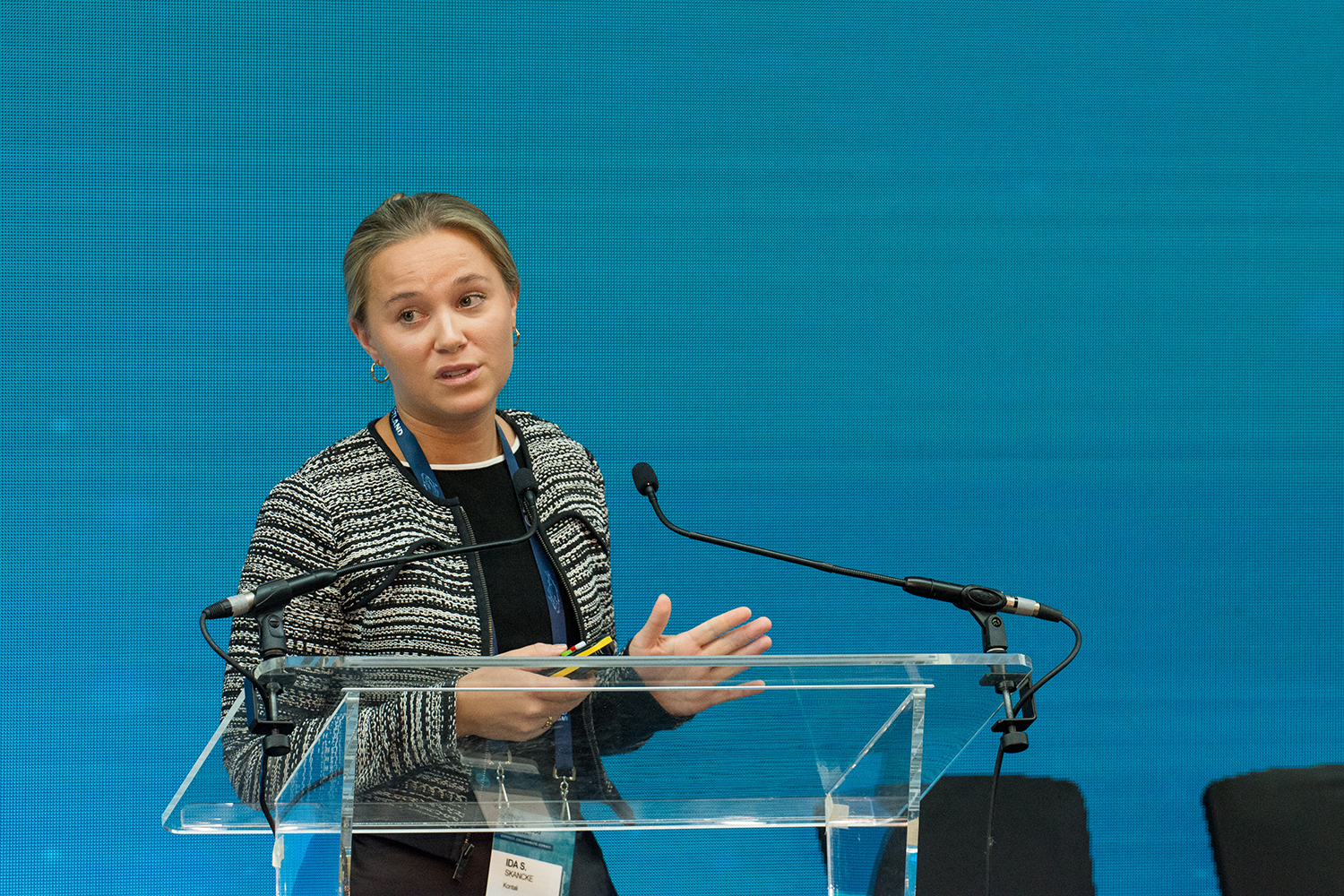
Vietnam had a tough 2023, with an 8 percent decline, and then a small recovery this year and flat point next year: “It had a tough time with the low-price environment.”
Indonesia had a surprisingly mild contraction in 2024; Thai shrimp production was flat in 2024, and production was about the same as in 2019. Other Asian countries have mixed growth expectations. Saudi Arabia and Iran were rapidly growing until recently, both are expected to decline in 2025.
Overall, the global shrimp supply growth is slower but still positive. Focusing on Monodon only, Asian farmers are switching to black tiger shrimp in search of better prices, and the giant river prawn’s period of growth has stopped.
“I think it’s getting better, but there’s a less positive view from respondents about the coming year,” said Nikolik. “The top three concerns are market prices, aquafeed and market access.”
Overall, after years of growth, every major market contracted. “That results in the weakest growth we’ve seen for the shrimp sector. But there’s a positive feeling for 2025. For shrimp, it’s a low-growth phase, with 2.5 percent expected,” said Nikolik.
Ida Skancke from Kontali spoke about the dynamics in the global shrimp trade, which she called an “interesting year.”
“With a decline in market supply to China and increases in importing markets (EU 9 percent and US 5 percent),” said Skancke. “It’s been a year of regulations and duties, which has created some uncertainties.”
In China, domestic production makes up a large share of the overall supply to market but there are production challenges in 2024. Imports were down during H1, with issues with shipments from Ecuador and lower reported demand for May 1.
In the United States, there has been an increased supply for the first five months of the year. The EU had a relatively strong H1 after a tough 2023 for imports, and the outlook for the rest of the year is positive.
Fabienne O’Donoghue, Market Reporter from Urner Barry by Expana, offered a “state of the union” of the coldwater shrimp supply. For the main exporters, there’s an export drop of 11.1 percent in five years. Greenland, Canada and Norway now total 65 percent, but the main story is the growth of Greenland and Norway.
However, there are challenges to the industry, including declining catches in Canada due to the effects of climate change, environmental stressors (like predators) and other factors. Government policy is also a factor.
“At the end of the year, the government of Greenland will decide on final quotas,” said O’Donoghue. “There’s a concern decline of the cold water prawn population due to overfishing and the growth of the cod population.”
O’Donoghue reported better news from the Barents Sea, with scientists observing larger concentrations of shrimp.
The session wrapped up with presentations from Dr. Bert Wecker, who showcased the tiered system employed by Oceanloop in Germany, and a “retailer roundtable” that discussed the pressing seafood issues facing top seafood buyers in major markets.
“It’s been a difficult couple of years, with inflation, but after the last year, we’ve seen a lot of growth in fresh and frozen,” said Natalie Smith from Tesco. “There’s a lot of opportunity for us to grow the category of ‘sustainable.'”
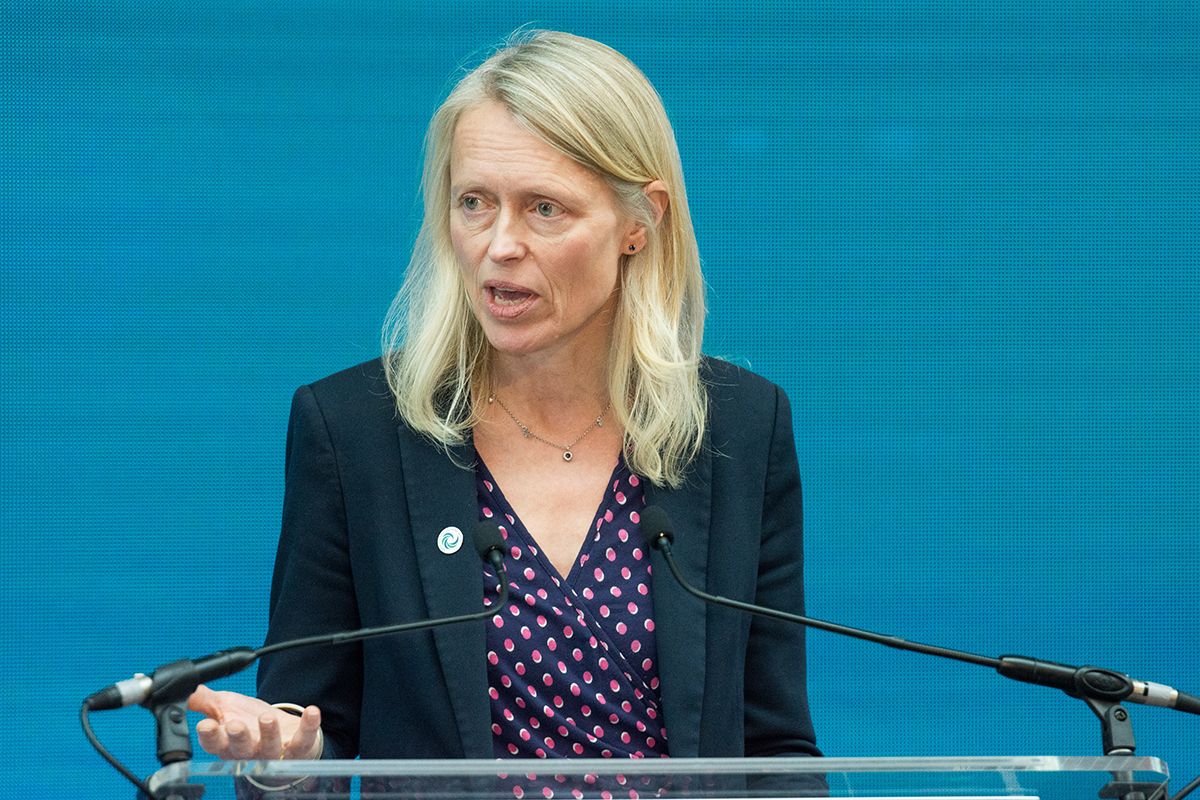
Seafood and the circular economy
With growing consumer demand for transparency and environmentally friendly solutions, experts shared insights into how sustainability efforts are driving measurable changes across the supply chain and setting new standards for responsible seafood production. Stuart McLanahan from Seafish presented initial findings from the organization’s Carbon Emissions Profiling Tool, showcasing case studies that demonstrated its value.
“The tool needs to keep evolving to meet industry needs and ensure it reflects the latest scientific and operational data,” said McLanahan.
Ragnar Nystøyl from Kontali presented the findings from the Byproduct Usage Report, beginning with the availability of rest raw materials (RRM).
“The pelagic sector has strong RRM utilization at 100 percent,” said Nystøyl. “In aquaculture, it’s a bit lower, around 90 percent.”
For white fish and shellfish, however, Nystøyl noted that utilization remains “low” and highlighted the “room for improvement.” He also showcased various product categories derived from marine RRM.
“The goal is to strive for 100 percent utilization,” Nystøyl emphasized. “But for both industry and research, it’s crucial to understand the available alternatives.”
Libby Woodhatch from MarinTrust discussed how the fisheries industry is contributing to the circular economy on a global level. MarinTrust focuses on improving responsible fishery sourcing and the production of marine ingredients through an accessible program of independent third-party certification. Currently, the organization has approved 310 by-products.
“Globally, 41 percent of marine ingredients are coming from byproducts and we expect to see that grow,” said Woodhatch. “It’s important that we maximize the quality of these byproducts.”
The morning sessions wrapped up with a panel of experts speaking about why and how nutrients and fish health can guide aquafeed’s future. Chris Haacke from MiAlgae gave an overview of how algal oils, insect meal, soybeans and single-cell yeast protein offer promising innovations for alternative feed ingredients, followed by a panel of experts afterward that discussed the nuances of the industry, such as consumer awareness/attitudes. The benefits of alternative feeds were also discussed, such as insect meal.
“We are producing black soldier fly meal from the larvae,” said Elin Kvamme from Innovafeed. “There is more than just protein in the insect meal. We have detected antifungal, antibacterial and antiviral materials.”
Waste not, want not
With a growing focus on sustainability and the circular economy, the seafood industry is finding innovative ways to capitalize – and monetize – everything they produce, including what was once considered discardable. From fish by-products to unused raw materials, the afternoon sessions focused on how “waste” can be used for valuable resources, driving both profitability and environmental responsibility. Dr. Alexandra Leeper, CEO of Iceland Ocean Cluster, kicked off the session showcasing “100 Percent Fish.”
“It’s about bringing the industry and innovators together to reimagine seafood at the moment and lots of different ways we can value it,” said Leeper. “It’s taken a lot of collaborations and transformations in the Iceland seafood sector.”
Leeper highlighted how fish skin, for example, can be repurposed for various uses, including cosmetics, marine supplements, medical products and even fish leather for items like bags or purses. Furthermore, Donna Fordyce from Seafood Scotland discussed developing opportunities for by-products in Scotland’s seafood sector, with a focus on fostering collaboration within the industry.
“We saw a lack of communication between the industry and potential innovators, as well as insufficient data on by-product availability,” said Fordyce. “There’s potential for greater value to be achieved here.”
A Seafood Scotland report emphasized the need for accurate data on the volumes and characteristics of processed species. Fordyce also highlighted current projects, such as Upcyclink, a by-product audit with six major Scottish seafood companies, and the Langoustine Project, which explores how to bring heads and tails ashore that are currently discarded.
“It’s a process that will take time and effort,” Fordyce noted. “One of our next challenges is establishing a cluster – what will that look like?”
Other panelists included Libby Woodhatch from MarinTrust, who emphasized the importance of responsibly sourcing by-products.
“We need to ensure the materials are traceable, which requires standardizing traceability and passing that data through the value chain,” said Woodhatch. She added that MarinTrust provides a framework for marine ingredients, enabling interoperable traceability for producers and the entire value chain.
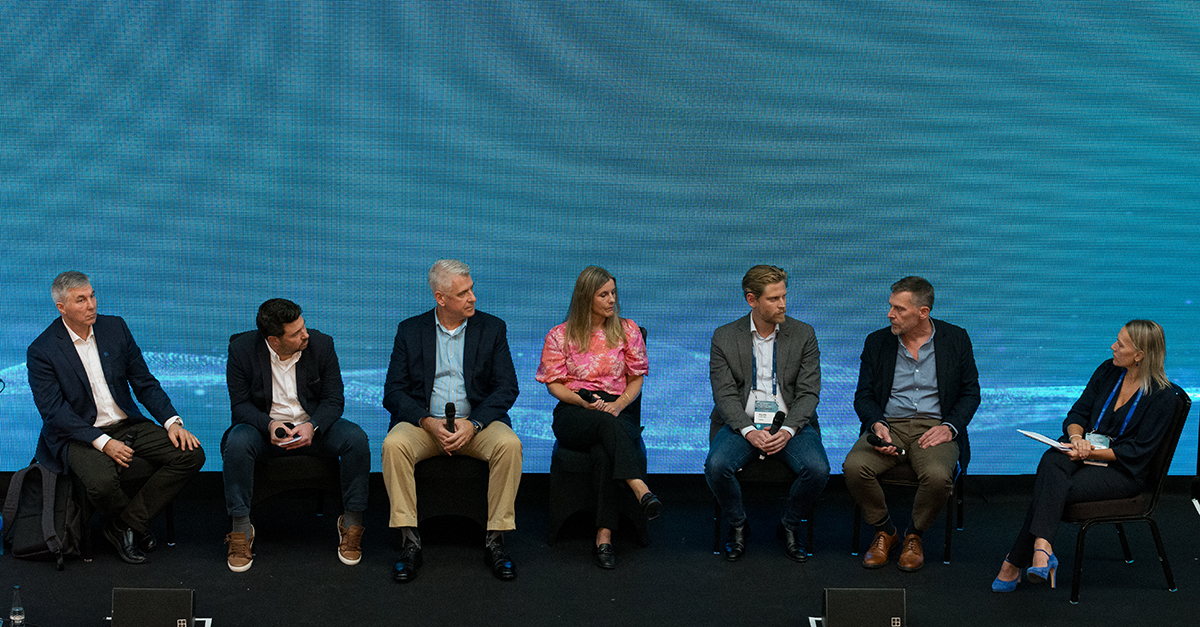
Aquafeed innovation
Continuing from the morning session, one of the afternoon sessions focused on affordable and accessible feeds from various sources: terrestrial ingredients, single-cell proteins, algae and insects. The panel included major industry leaders – MiAlgae, Innovafeed, USSEC, BioMar, Calysta and Veramaris – who “pitched” to the audience about the benefits of these emerging alternative agreements.
“People used to ask: can I use it? Is it safe? That’s not even a question anymore,” said Lukas Manomaitis from USSEC, speaking about how soy meal has advanced in recent years.
“The biggest innovation from MiAlgae is that we’re not using agricultural products – we’re using byproducts from whiskey,” said Chris Haacke from MiAlgae. “Super positive for farmers and the feed mills, and helps to reduce carbon. The technology has been proven at scale and we’re producing commercially. We’ve recently closed our Series A-funding to accelerate the next phase of growth.”
The panelists also discussed challenges to scaling up, such as securing the feedstock to enable the product to come into play, and what solutions are being used.
“At Calysta, a lot of our scientists are all biotech experts,” said company VP Allan Leblanc. “Whenever you want a lot of agricultural feedstock, it becomes expensive and hard to transport. Using methane is 100 percent consistent and the transportation is easy and there’s a network all over the world to transport it. And the scale is there. So we’re using a lot in the agricultural and aquaculture world.”
Now that you've reached the end of the article ...
… please consider supporting GSA’s mission to advance responsible seafood practices through education, advocacy and third-party assurances. The Advocate aims to document the evolution of responsible seafood practices and share the expansive knowledge of our vast network of contributors.
By becoming a Global Seafood Alliance member, you’re ensuring that all of the pre-competitive work we do through member benefits, resources and events can continue. Individual membership costs just $50 a year.
Not a GSA member? Join us.
Author
-

Lisa Jackson
Lisa Jackson is a writer based in Hamilton, Canada, who covers a range of food and environmental issues. Her work has been featured in Al Jazeera News, The Globe & Mail and The Toronto Star.
Tagged With
Related Posts
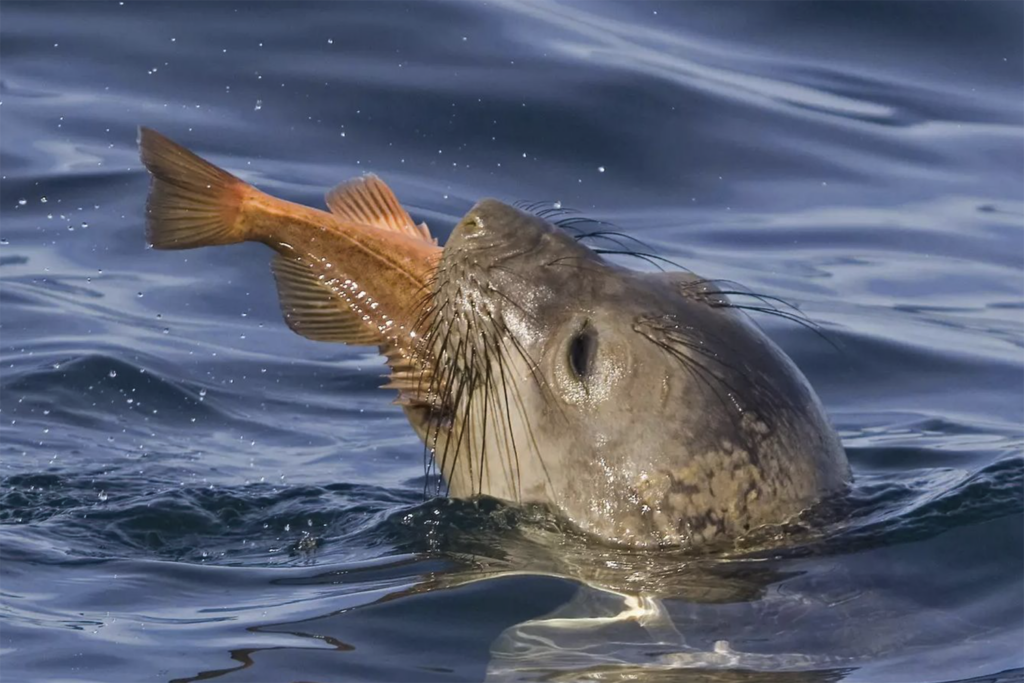
Innovation & Investment
Responsible Fisheries Innovation Award Finalist: GenusWave and its Targeted Acoustic Startle Technology
To reduce predation and increase catch, GenusWave uses brief sounds to startle marine mammals, using technology to target specific species.
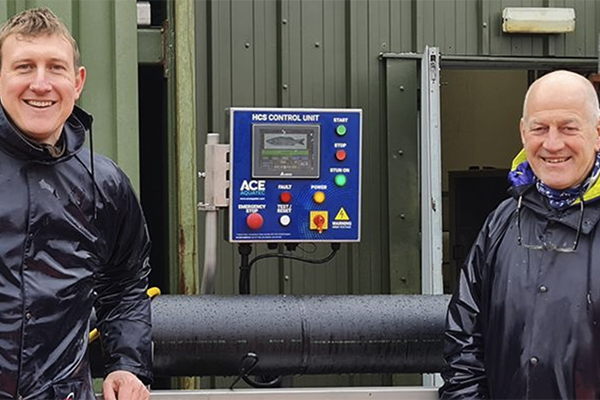
Responsibility
Ace Aquatec and Tiny Fish team up to advance Scotland’s salmon circular economy
Ace Aquatec and Tiny Fish aim to expand premium food markets for small Scottish salmon, enhancing the circular economy.
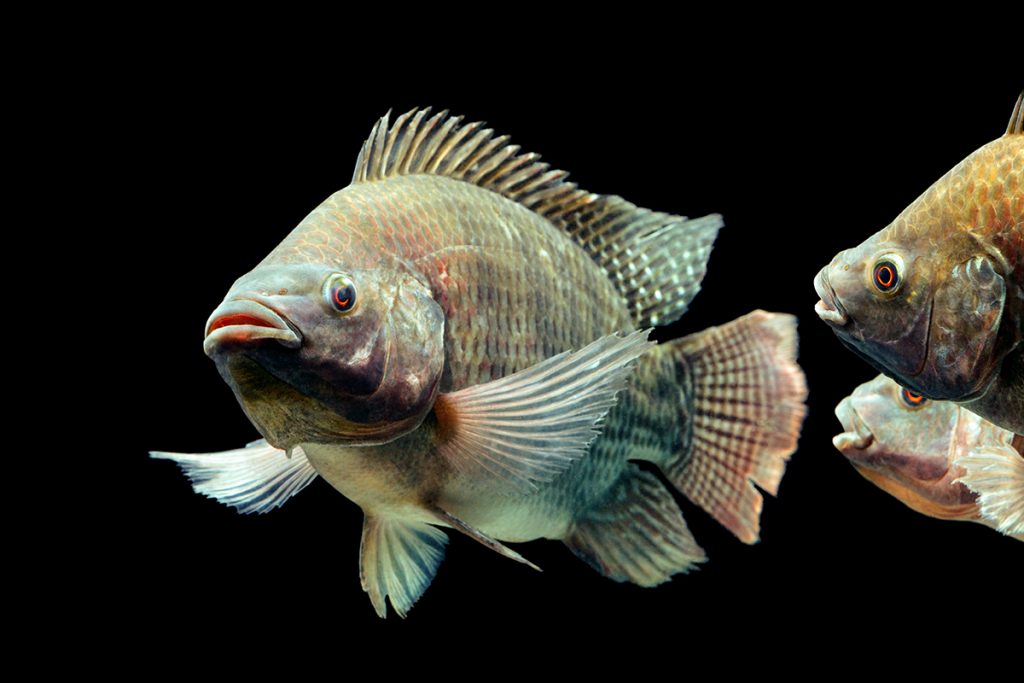
Health & Welfare
‘The right thing to do’: How aquaculture is innovating to reduce fish stress and improve animal welfare
With research showing that stress can damage meat quality, fish and shrimp farmers are weighing the latest animal welfare solutions.
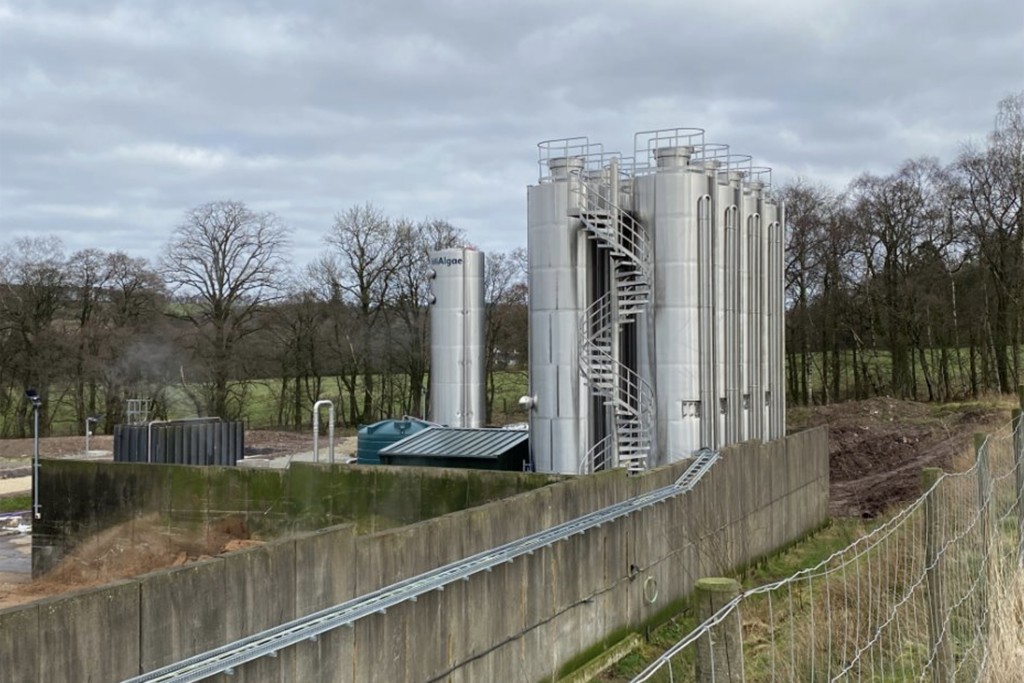
Aquafeeds
It all starts with whisky: Scottish company ramping up microalgae biomass production for aquaculture and pet foods
With a decentralized circular economy approach to microalgae production, MiAlgae is positioned to contribute to the growing basket of alternative feed ingredients.


